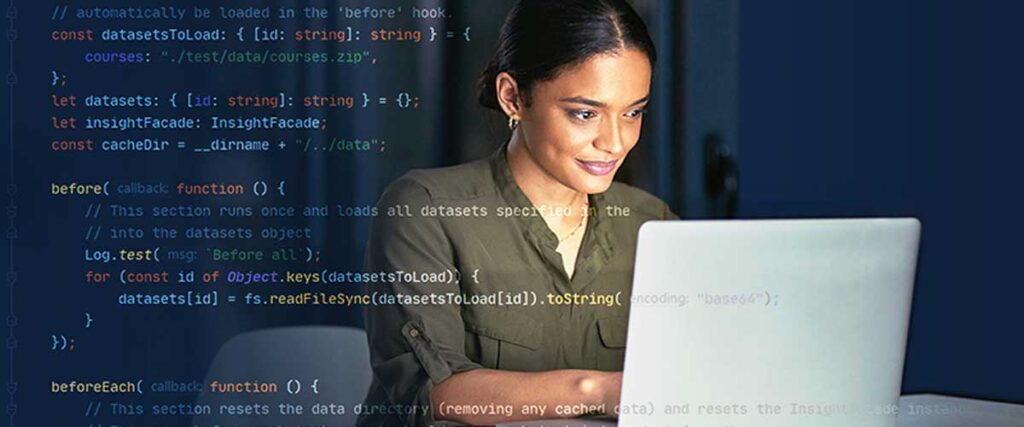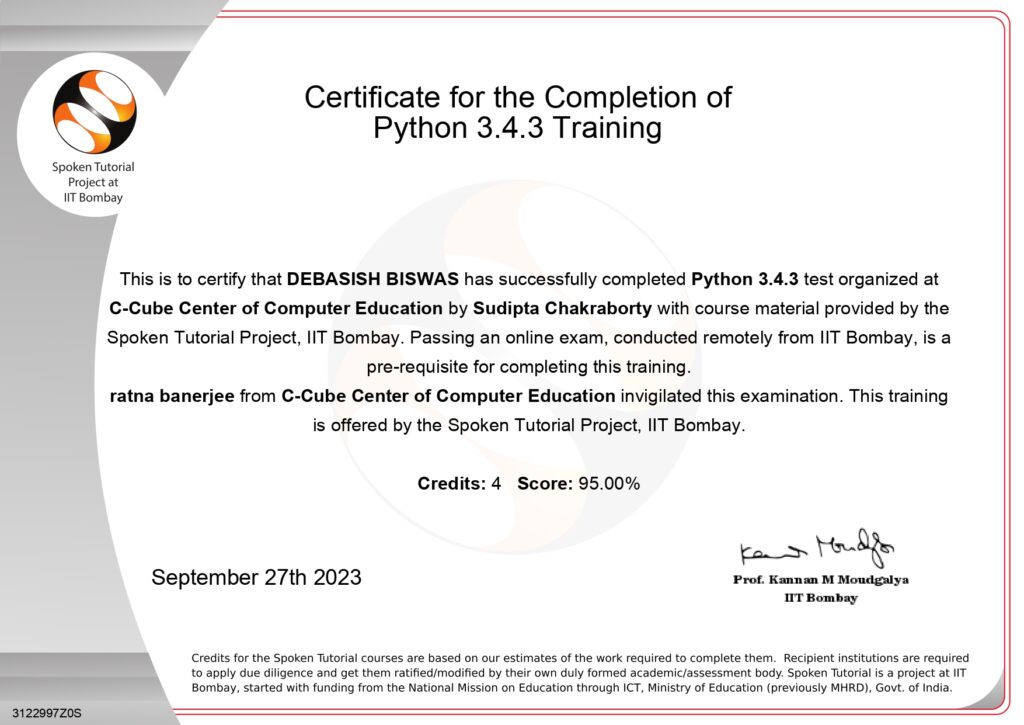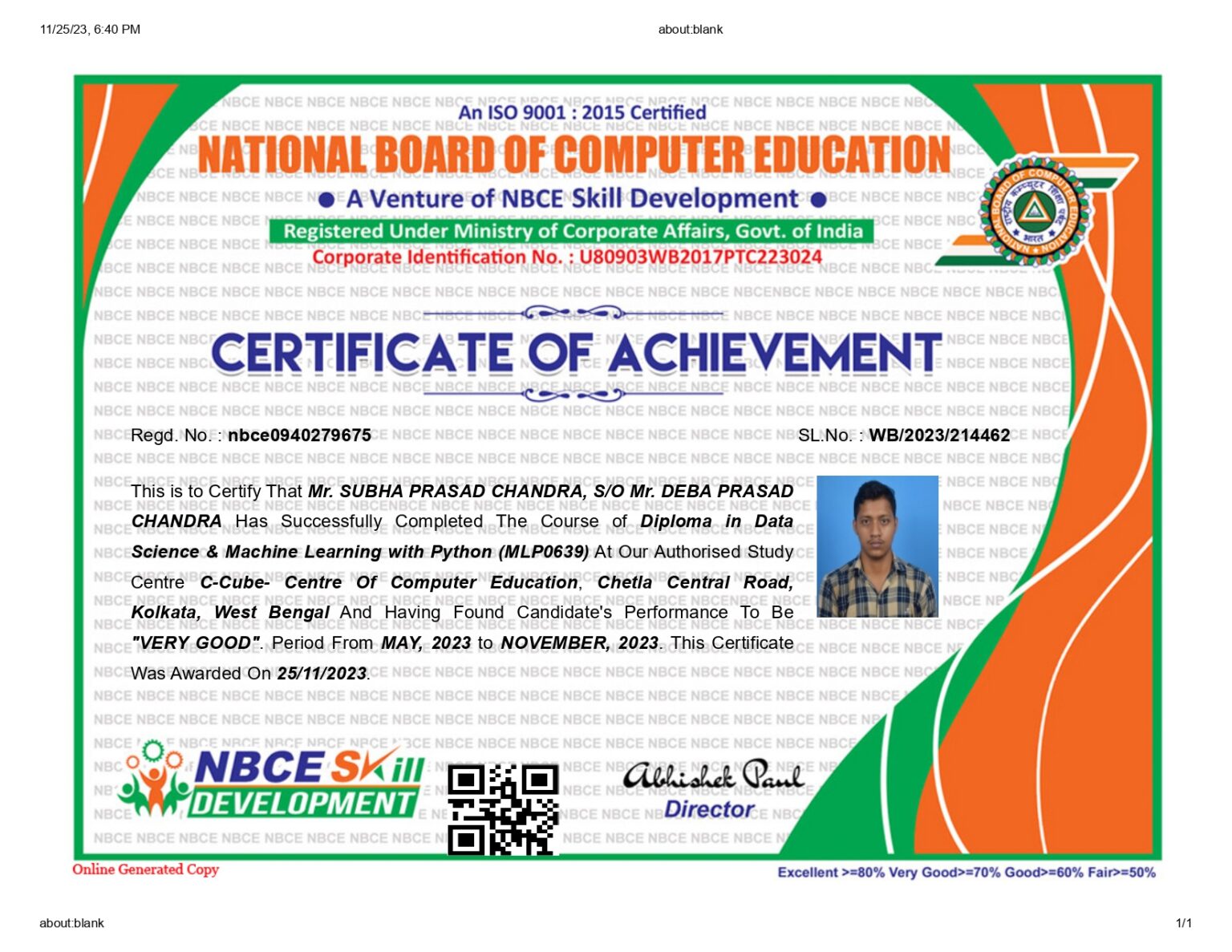9007116752
c3creativedomain@gmail.com

C-Cube
Centre of Computer Education
- Home
- Courses
- Data Science & ML
- Data Science with R
- Financial Data Analytics
- Data Analytics Training in Kolkata
- Full Stack Development Training in Kolkata
- Website Development
- Android App Development
- Programming Languages
- Cyber Security and Ethical Hacking
- Data Structure & Algorithm
- Digital Marketing Training Program Kolkata
- Marketing Analytics
- Share Trading Training
- F.A & Ms-Office
- About Us
- Gallery
- Contact Us

Full Stack Development Training
What is Full Stack Development Training ?
Full Stack Development Training in Kolkata is in high demand. Basically it teaches you to build both front-end and back-end of websites and apps. Besides you learn coding languages like HTML, CSS, JavaScript, and more. It also covers server-side technologies like Node.js and databases. Chiefly a Full Stack Development Course helps you gain skills to handle the entire Full Stack development process of Training. Additionally This training opens up job opportunities in IT companies and startups. It is ideal for beginners or anyone wanting to become a full-stack developer.
So join our Full Stack Development Training Bootcamp now and excel in your Development Career with hands-on Training and Internship offer.
Need for Full Stack Development Training Course ?
The need for Full Stack Development Training is growing as companies want developers who can handle both front-end and back-end tasks. Basically this training teaches you to build complete websites and apps, from the user interface to the server and database. Consequently with these skills, you can save companies time and money by managing the entire development process.
A Full Stack Development Course also prepares you for high-demand jobs in the tech industry. Especially It equips you with knowledge of multiple programming languages and tools like JavaScript, Node.js, and databases. Certainly with these skills, you can work in startups, IT firms, or even freelance. Consequently this makes it a valuable skill for anyone aiming to succeed in the digital world.
- Complimentary Python Programming Bootcamp
- Designed for Working Professionals and Students
- 20+ Case Studies and 5+ Industry Projects
- Dedicated Student Support
- Exclusive Job Assistance
- Live coding classes and profile building workshops
- Programming – Python , SQL
- Statistics – Linear Algebra , Probability & Statistics
- Data Manipulation & Analysis – Data Wrangling , Data Visualization , Exploratory Data Analysis (EDA):
- Machine Learning Algorithms – Supervised Learning , Unsupervised Learning:
- Opportunity to wok on live-projects as part of Internship on reputed Companies.
- Internship work certificate
- Certification on Python from IIT Bombay
- Certification on Diploma in Data Science & ML from Central Govt. of India
Both the below mode of Training is available.
Online Mode – Live Class
Offline Mode
Course Curriculum
Full Stack Development with Java
Duration : 8 Months
Classes : 3 in a week
Java Full Stack Development
Full Stack Development with Python
Duration : 6 Months
Classes : 3 in a week
Python Full Stack Development
Full Stack Development with Mern
Duration : 6 Months
Classes : 3 in a week
Mern Full Stack Development
Full Stack Software Development with PHP
Duration : 6 Months.
Classes : 3 in a week.
PHP Full Stack Development
Eligibility Criteria
- Graduates or Colleges Students from any discipline
- No prior work experience required
- No prior coding experience or tech know-how required
Best Suited For
- IT Professionals
- Marketing Professionals
- Recent Graduates
IIT Bombay Certification for Python

Central Govt. Certification for Java
National Board of Computer Education is a multi-award winning educational content portal. Hence all the courses are launched after an initial survey. Consequently the courses fulfill the requirement of the students. Also to gain professional qualification, certification and extra classes in career orientation and self-development. Eventually after completion of each module the performance of the students is monitored through regular tests to develop their skills. That the students should appear successfully. In the Job market and handle the situation confidently. Our students are employed in reputed organization both in India and Abroad. The key to success in ensuring quality training by the experts. Provide education for the rural youth enabling him to play a part of the global development.

FAQs
Data science is a broad, multidisciplinary field that extracts value from today’s massive data sets. It uses advanced tools to look at raw data, gather a data set, process it, and develop insights to create meaning. Areas making up the data science field include mining, statistics, data analytics, data modeling, machine learning modeling and programming.
Machine learning (ML) is a subset of artificial intelligence (AI) that focuses on learning from what the data science comes up with. It requires data science tools to first clean, prepare and analyze unstructured big data. Machine learning can then “learn” from the data to create insights that improve performance or inform predictions. Machine learning works on a known problem with tools and techniques, creating algorithms that let a machine learn from data through experience and with minimal human intervention. It processes enormous amounts of data a human wouldn’t be able to work through in a lifetime and evolves as more data is processed.
You must meet the following requirements to be admitted to the Data Science and ML Course :
- A bachelor’s degree/ Class 12 passed with a grade point average of at least 50%.
- Understanding the fundamentals of coding and math.
A data science course can help you in your career in many ways:
Data analysis skills: A data science course can help you develop the skills needed to analyze and interpret data, which is essential in many industries. You can use these skills to identify patterns, draw insights, and make data-driven decisions.
Machine learning skills: A data science course can also help you learn how to build machine learning models, which can be used to automate decision-making and prediction tasks. These skills are in high demand in many industries, including healthcare, finance, and e-commerce.
Technical skills: A data science course can help you develop technical skills such as programming, data manipulation, and data visualization. These skills are highly valued in the job market, as they are essential for working with data and building intelligent systems.
Career opportunities: The demand for data scientists is growing rapidly, and a data science course can open up many career opportunities in fields such as data analysis, machine learning engineering, and data science consulting.
Higher earning potential: Data scientists are among the highest-paid professionals in the tech industry, and a data science course can help you develop the skills needed to earn a high salary.
A machine learning course can help you in your career in many ways:
Data analysis skills: A machine learning course can help you develop the skills needed to analyze and interpret data, which is essential in many industries. You can use these skills to identify patterns, draw insights, and make data-driven decisions.
Machine learning skills: A machine learning course can help you learn how to build machine learning models, which can be used to automate decision-making and prediction tasks. These skills are in high demand in many industries, including healthcare, finance, and e-commerce.
Technical skills: A machine learning course can help you develop technical skills such as programming, data manipulation, and data visualization. These skills are highly valued in the job market, as they are essential for working with data and building intelligent systems.
Career opportunities: The demand for machine learning engineers and data scientists is growing rapidly, and a machine learning course can open up many career opportunities in fields such as machine learning engineering, data science consulting, and AI research.
Higher earning potential: Machine learning engineers and data scientists are among the highest-paid professionals in the tech industry, and a machine learning course can help you develop the skills needed to earn a high salary.
The Data Science program is ideal for individuals who are interested in solving complex problems using data-driven approaches. This program is suitable for individuals who have a background in mathematics, statistics, computer science, or other related fields and are interested in applying their skills to analyze and interpret large datasets.
The program is also suitable for professionals who want to upskill and advance their careers in the field of data science. This includes individuals working in industries such as finance, healthcare, marketing, and technology, as well as those working in government and non-profit organizations.
Overall, the Data Science program is ideal for individuals who have a passion for working with data and want to develop the skills and knowledge required to analyze, interpret, and visualize complex datasets.
A data science course can provide a wide range of skills related to working with data, including:
Data analysis: You will learn how to use tools and techniques to explore and analyze data, identify patterns, and draw insights.
- Statistics : You will learn statistical concepts such as probability, hypothesis testing, and regression analysis to make predictions and decisions based on data.
- Machine learning : You will learn how to build and evaluate models that can automatically learn from data, make predictions, and identify patterns.
- Programming : You will learn how to use programming languages such as Python or R to manipulate data, build models, and visualize results.
- Data visualization : You will learn how to use tools such as graphs, charts, and interactive dashboards to present data in a clear and compelling way.
- Big data technologies : You will learn how to work with large and complex data sets using technologies such as Hadoop and Spark.
- Business and communication skills : You will learn how to communicate findings and insights to non-technical stakeholders, understand business requirements, and make data-driven decisions.
A machine learning course can provide a wide range of skills related to building intelligent systems that can learn from data, including:
- Data preparation : You will learn how to clean, preprocess, and transform data to prepare it for use in machine learning models.
- Machine learning algorithms : You will learn about a variety of machine learning algorithms such as linear regression, decision trees, random forests, and neural networks.
- Model selection and evaluation : You will learn how to evaluate the performance of machine learning models and select the best model for a given task.
- Feature engineering : You will learn how to extract and create features from raw data to improve the performance of machine learning models.
- Deep learning : You will learn how to build and train deep neural networks for tasks such as image recognition and natural language processing.
- Model deployment : You will learn how to deploy machine learning models into production environments.
- Ethics and bias in machine learning: You will learn about the ethical and social implications of machine learning, as well as techniques for mitigating bias in models.